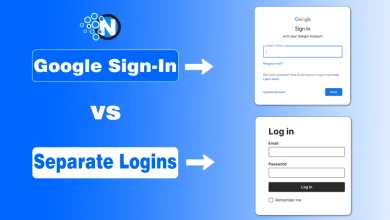Covering Your App Security Bases with Both Black Box and White Box Testing
In the industrial applications sector, the stakes for maintaining robust cybersecurity measures are exceptionally high. Industrial Control Systems (ICS), which manage vital infrastructure and manufacturing processes, present a prime target for cybersecurity threats.
For instance, the German steel mill cyberattack of 2014 is a notable example of how digital infiltration threats can cause substantial physical damage to industrial control systems. In this attack, the perpetrators targeted the mill’s control systems through spear-phishing emails aimed at the industrial operators.
Once access was obtained, they changed the control systems of the blast furnace such that it shut down incorrectly. The substantial physical damage the unscheduled shutdown caused to the furnace highlights the major influence such cyberattacks can have on important infrastructure.
Simply said, these systems need unique attention because of their important operating character in addition to defense against traditional hazards.
Black box and white box testing techniques are essential to guarantee complete security. Black box testing looks at the system from outside and searches for weaknesses free from awareness of internal architecture. Conversely, white box testing examines the internal logic and structure of the system’s code in great detail.
Both approaches have different benefits and create a layered protection strategy that is absolutely vital for protecting industrial equipment.
In this blog post, I will help you understand these testing techniques within the framework of industrial equipment.
Let’s start!
Understanding Black Box and White Box Testing

Black Box Testing
Black box testing assesses system performance without knowledge of the internal application operation by the tester. The tester enters data into the user interface of the system to observe its behavior and ascertain whether it satisfies the stated criteria. This method replics an external assailant without prior awareness of the architecture or coding of the system.
Black box testing is helpful in application security testing for spotting vulnerabilities that might be taken advantage of without internal system knowledge, such those pertaining to the user interface, session management, and application behavior under several network situations.
White Box Testing
White box testing, also known as clear box testing or glass box testing—is an exhaustive review of the internal logic and structure of the application’s code. Knowledge of the source code is required by testers, who then utilize this knowledge to evaluate conditional loop functionality, data flow integrity over the program, and code execution pathways. This approach lets one grasp any possible security flaws in the application more fully.
This method is quite helpful in revealing vulnerabilities, internal threats, backdoors, and insecure coding techniques among other things, that are not obvious from the outside. Before they can be taken advantage of outside, white box testing can assist in preventively addressing issues.
Thus, the main variation between the two testing techniques is the degree of system internals’ exposure to the tester. Whereas white box testing needs thorough understanding of the source code, black box testing emphasizes the input and output and does not call for any particular expertise of the internals of the product.
Furthermore, different approaches are applied in both methods; black box testing frequently combines decision table testing, boundary value analysis, and equivalency partitioning. By contrast, white box testing makes use of techniques including control flow testing, data flow testing, branch testing, statement coverage, and path testing.
Application to Industrial Devices
ICS apps, which include Supervisory Control and Data Acquisition (SCADA) systems, Distributed Control Systems (DCS), and other forms of automated control systems.
ICS are excellent candidates for thorough security assessment because of their special qualities, including high dependability and real-time processing needs.
Black box testing is essential since it reflects real-world situations whereby attackers might not have intimate knowledge about the system and thereby replicates an external attack. Maintaining the integrity and availability of the system depends on vulnerabilities in how the system manages inputs from the environment, handles commands, and regulates access, hence this testing can expose such weaknesses.
Imagine a situation whereby black box testing is conducted on the control system of a power grid that use SCADA for monitoring and regulating the distribution of the electricity. Acting without awareness of the underlying system architecture, the testers find a weakness in the web-based remote monitoring interface. They could disturb load balances and change them. This discovery results in instant improvements in user authentication methods and interface security.
On the other hand, white box testing is essential for looking at the proprietary, usually legacy, programming sometimes utilized in ICS components. White box testing helps guarantee that any vulnerabilities resulting from out-of-date code or neglected security procedures are found and minimized, as these systems might have long lifespans and may not get frequent upgrades. It enables a thorough evaluation of security from the standpoint of someone fully aware of the system, say a dissatisfied employee or a supplier having access to the system internals.
Imagine a white box testing in a water treatment plant. Testers have full access to the program controlling the chemical dosing process’s source code. Using their thorough investigation, they expose a backdoor left by a former developer that might provide illegal access to system controls. The problem is quickly resolved, therefore safeguarding the system from possible insider threats and hostile changes.
By using both testing techniques, companies can guarantee a better degree of security for industrial systems and equipment that support the foundation of their infrastructure overall.
Best Practices for Implementing Testing in Industrial Settings
Comprehensive protection against cyber risks depends on including both of these strong testing techniques into the security lifetime of industrial applications.
These are some guidelines to follow:
- Put both testing techniques to use inside the CI/CD process. This guarantees early on in the development process the detection of vulnerabilities and their mitigating ability. White box testing will examine internal security aspects during the development stage; black box testing will constantly evaluate the program from an outsider’s point of view.
- Create regular testing plans outside CI/CD’s integration. Trigger test cases also during any major network or application change, including upgrades or new component introduction.
- Use a layered approach whereby a deeper investigation is conducted using white box testing and surface-level vulnerabilities are found using black box testing. This method guarantees a thorough covering of possible security weaknesses.
Moreover, take into account combining instruments that let you address several facets of testing, such:
- Black box testing with Kali Linux can help you to replicate outside assaults and find vulnerabilities that might be taken advantage of without internal system knowledge. Kali Linux comes with a range of tools meant for penetration testing, which in an industrial environment might be quite useful.
- Wireshark’s network protocol analyzer is quite helpful for black box testing by traffic monitoring. It helps spot odd traffic patterns or data dumps suggesting security flaws.
- Designed for white box testing, Coverity may examine your source code for any security issues. Early identification of probable software flaws allowing industrial control systems to run depends on this.
Apart from these, you may dynamically analyze black box testing using tools like OWASP ZAP and Burp Suite, therefore offering real-time operation and vulnerability information. Static application security testing (SAST) tools such as SonarQube or Checkmarx can examine source code for vulnerabilities possibly missed via manual review procedures for white box testing. At last, think about using corporate systems such as Qualys or Nessus to routinely scan your network environment for operational system, application, and industrial network device vulnerabilities.
Conclusion
By including black box and white box testing approaches into the security lifecycle of your industrial device management systems, you provide strong protection with thorough vulnerability coverage from both internal and outside points of view.
This double strategy guarantees adaptation to changing cyber threats and regulatory compliance as well as early identification and mitigating of possible security risks. Using these techniques throughout the phases of app development and deployment will make all the difference in protecting important industrial systems and allowing their dependable operation inside the larger infrastructure.




